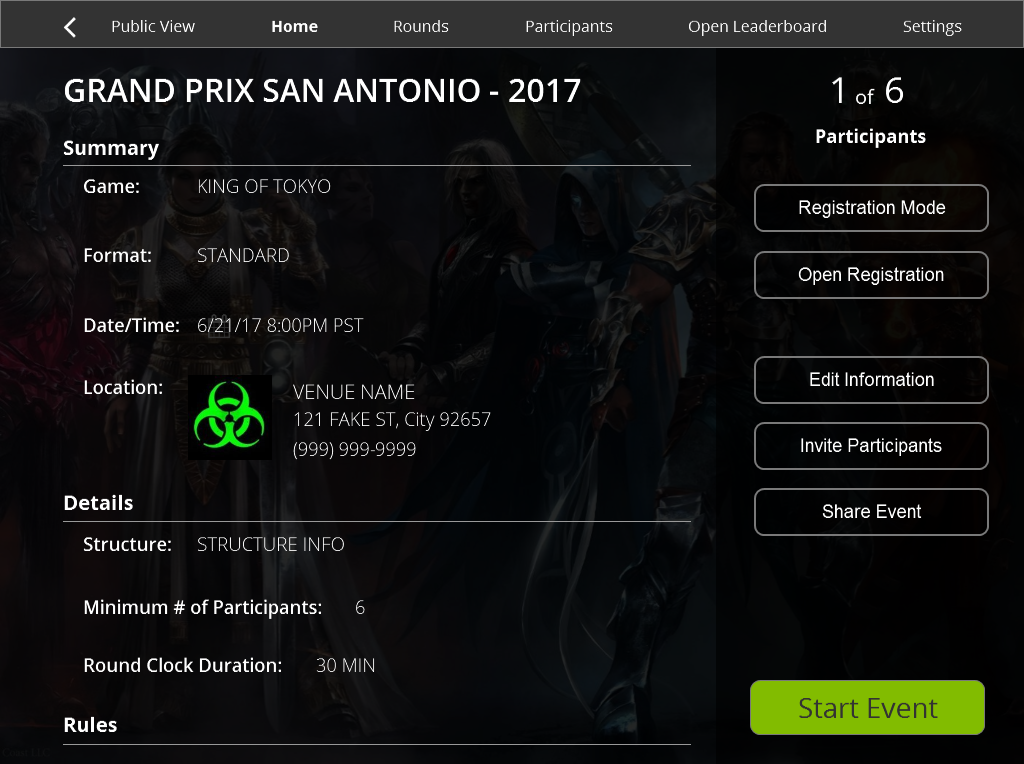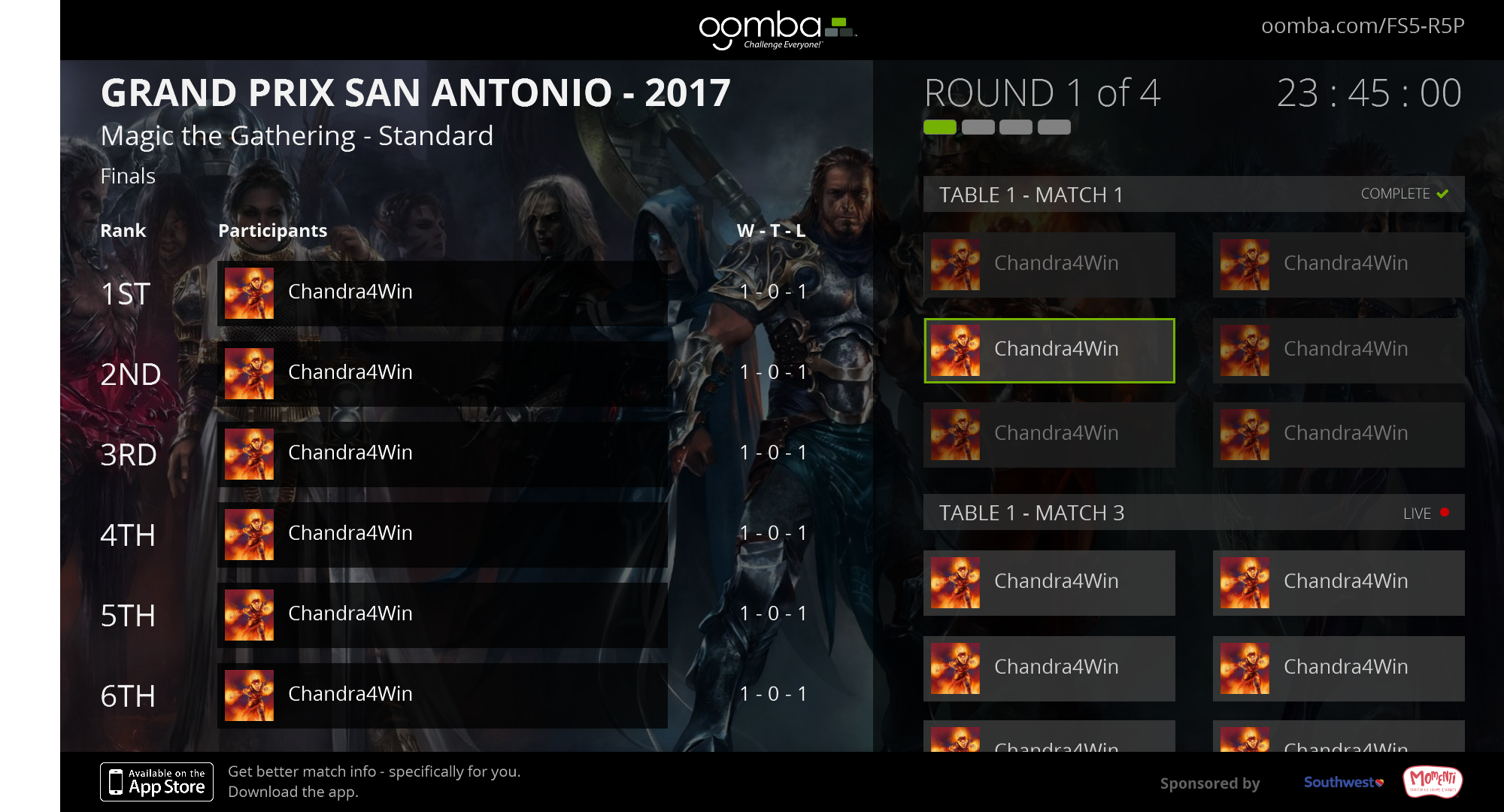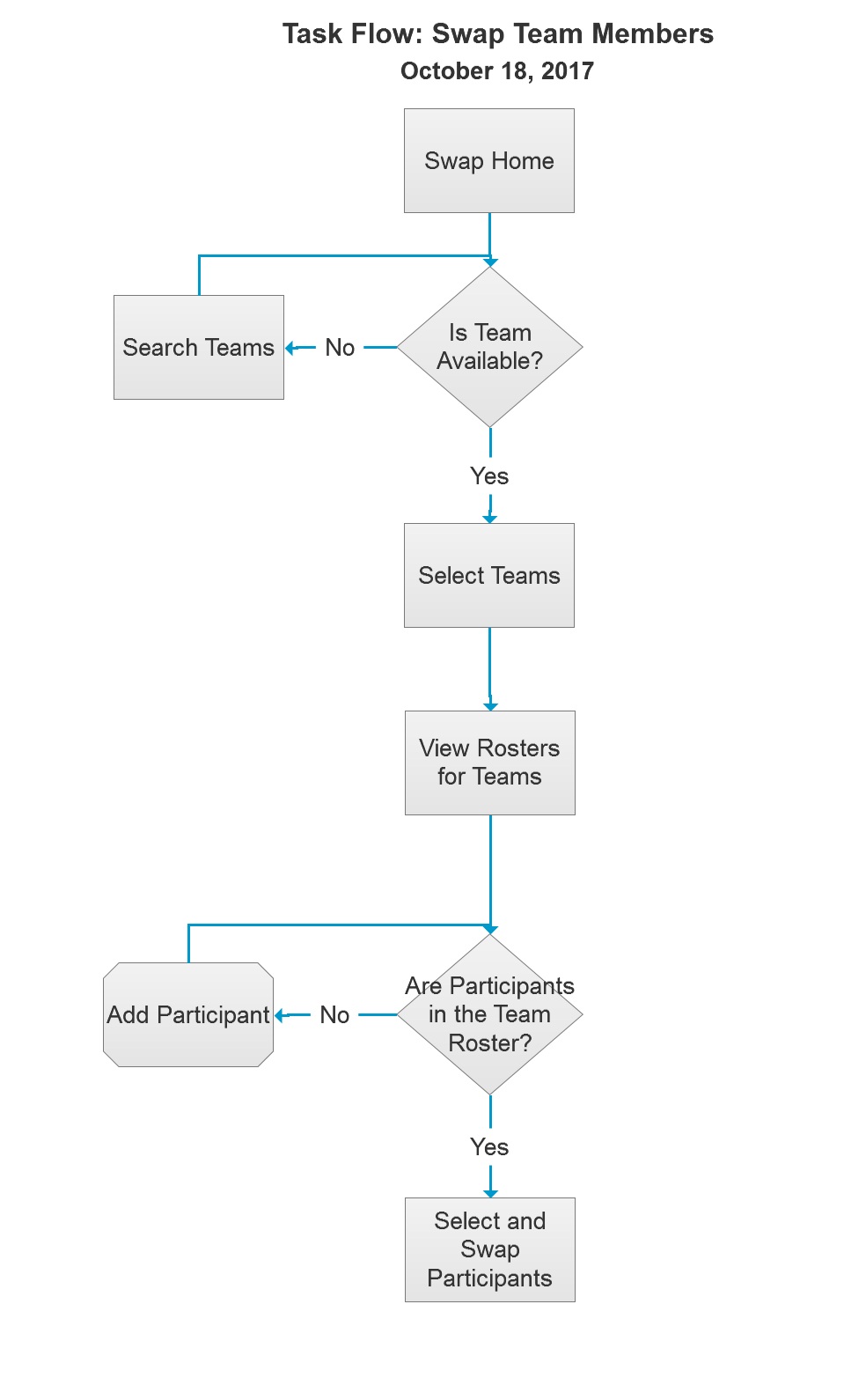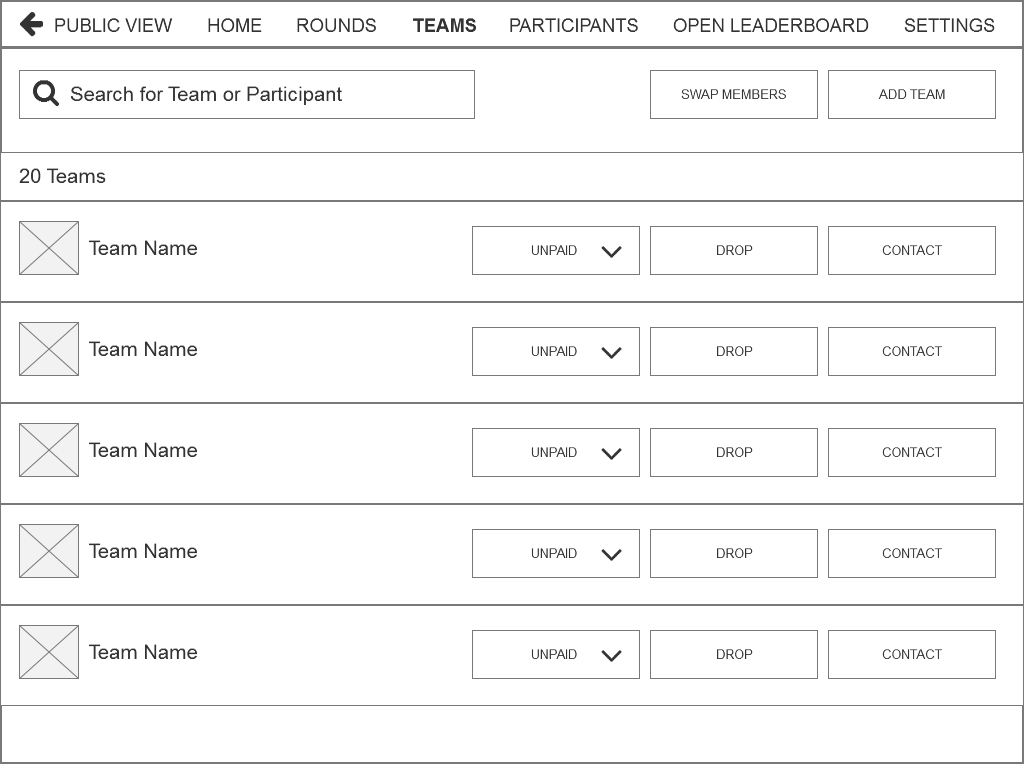Introduction
Running eSports and tabletop tournaments with teams participating is a challenge. Tournament organizers are forced to run large scaled events on pen and paper. My task was to find a solution for tournament organizers to digitally manage teams and scores. I researched and designed a tournament management software that addressed the major problems that tournament organizers faced.
Oomba, Inc.
Oomba was a software startup company whose main goal was to make it easier to run and attend eSports and tabletop events. In 2017, Oomba launched a national tournament series, known as Unrivaled. The current software was frustrating and confusing to use, and therefore Oomba needed to fix usability issues before their new tournament series began.
Prototype for Team Manager
Defining the Problem
While conducting user interviews, walking through journey maps, and watching a couple of tournament organizers manage their events, I saw a pattern. Experienced tournament organizers already knew how to manage small scaled events. Their main issue was managing a large event.
Results from research: Tournament organizers managed tournaments with pen and paper. However, with large events, TO’s were overwhelmed with: last-minute registration, contacting missing teams or team members, and last-minute changes to the roster.
Example of a Large Scaled Tournament
Personas: The Tournament Organizers
There are two types of people who organize tournament events. The first is a new tournament organizer. Someone who is just getting started. The second is the experienced tournament organizer.
Key findings: The experience tournament organizer was the only persona running large scaled events. Experienced TO’s struggled with: marketing, making mistakes or calls on rulings, and having enough people to help who understood the tournament environment.
Tournament Organizers
Breaking Down Tournaments to the Basics
Before working on designing the application, it was important to break down the main features that the team would focus on. Once completed, all that was left was to diagram out the tasks and fill in the missing gaps as they arose.
Taskflows
Pitching Solutions
After the problem was defined, the team held brainstorming sessions, collaborative white-boarding meetings, and sketched up possible solutions. Users enjoyed attending participatory design sessions.
Findings from research and participatory design: Users enjoyed testing and the team discovered more features that they wanted. Tournament organizers were looking for substitutions, viewing payment status, and creating ad hoc teams.
Wireframes
Last Minute Substitutes
Through research, we found that there are people who show up to events that are not registered. Tournament organizers are familiar with the fact that attendees may bring some friends along. However, sometimes those people want to play on the same team, and that poses a problem for the tournament organizer.
There are times where the tournament organizer needs to swap participants from a team or add new participants to an existing team. Therefore, it was important to design and test how well a user could add a participant or swap a team member.
Mockups for Substitutes
Contacting Missing Team Members
During events, players and their teams can go missing. Players tend to leave events for different reasons. Some of the most common reasons were: food, wait times, and performing poorly.
When people go missing at an event, it can cause delays and becomes frustrating for a tournament organizer. Enough missing people can make events last hours longer and can affect the overall player experience. I designed an SMS and push notification feature that would give a fast way for a tournament organizer to contact those who were missing.
Final Mockup For Team Status
The Results
Constantly testing prototypes that looked and worked like the built application allowed for better insight on the user experience. I helped guide the development team and ensured that the Team Management application would allow tournament organizers a better way to run their events. Customer feedback was overall positive.
Feedback was so positive, the user requested more features for the application. This would not only help team management but include: setting up a tournament, participant pairing, scoring, and a leaderboard.
Mockups for Additional features requested















